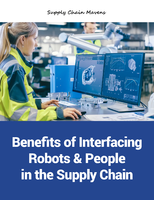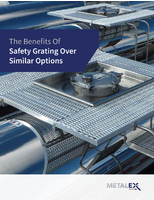Linear Motors are optimized for speed, positioning.
Press Release Summary:

Used for horizontal or compensated vertical axes, liquid-cooled 1FN3 Peak Load Motors offer Nominal Force (Fn) of 8,100 N, Max Force (Fmax) of 20,700 N, and max velocity of 253 m/min. Liquid-cooled 1FN3 Continuous Load Motors and convection-cooled 1FN6 Magnet Free Secondary are both suited for horizontal, inclined, or compensated vertical axes. Respective values are Fn of 10,375 and 2,110 N, Fmax of 17,610 and 8,080 N, and max velocity of 129 and 532 m/min.
Original Press Release:
New Linear Motor Designs Improve Speed, Positioning
Multiple design offerings permit a variety of configurations
Linear motors enable maximum precision and dynamic performance in various motion control tasks. These include not only rapid traverse, but slow constant speed traverse of machine heads, spindle slides, tool management systems, part handling devices and more. There are considerable cost savings to be realized when various mechanical components are replaced by simple and efficient linear motors. These motors provide a total drive system, offering reliability, precision, high dynamic stability, low maintenance and improved production time.
What is a linear motor?
The rotary electric motors with which we are so familiar contain a circular electro-magnet called a stator. In a linear motor, the electromagnet is built the same way, only flat as if it were unrolled. The rotor is also built the same way, unrolled or flat. When the electromagnets of the primary are energized, they attract the secondary sections and push the motor along. The more current applied, the stronger the magnetic field and the more force the motor generates.
Visualize a wooden roller coaster at your favorite amusement park. To get the train up the first hill for that "big drop", we roll to the base of the hill where a chain drive, driven by an electric motor, gearbox and sprocket, clanks and jerks the train to the top of the hill. Now, imagine a ride a modern roller coaster with linear motors. Feel that sudden burst of acceleration as you leave the station? Enough force can be generated to propel the train over the first hill and through that first scary loop. Booster "shots" of force can be used at various points to maintain the train's speed, as it rolls through loops and turns never before possible with older designs. Finally, you feel the braking action at the station by...you guessed it, a linear motor. What stopped the wooden roller coaster? Remember the guy at the station pulling a big lever?
Linear motors are simple. Two main components, the primary containing electro-magnets and the secondary with either permanent magnets or magnet-free, drive the moving member. Gone are servo motors, resolvers, tachometers, couplings, pulleys, timing belts, ball screws and nuts, support bearings, lubrication systems and cooling systems. Gone also are systems that used hollow ball screws with coolant systems for thermal stabilization. Gone are rack and pinion systems that used expensive torque motors and/or gear boxes. Gone also are chain drive systems requiring high torque hydraulic motors with associated power units. So other than eliminating expensive components, what do we gain?
The chief advantages of linear motors in machine applications include:
With the recent introduction of its 1FN6 Linear Motors, Siemens now offers three models of Linear Motors for seamless integration with all Sinumerik or Simotion control systems using Sinamics drives. Linear scales for position and velocity feedback are available from a variety of third party suppliers to suit the application. These new Linear Motor models offered by Siemens are:
1FN3 Peak Load Motors: Short time, high acceleration/deceleration and velocity rates comparable to S3 duty. Can be used for horizontal or compensated vertical axes. Nominal Force (Fn) 8,100 N. Maximum Force (Fmax) 20,700 N. Maximum velocity 253 m/min with liquid cooling.
1FN3 Continuous Load Motors: Long power-on duration for horizontal, inclined or compensated vertical axes. Comparable to S1 duty. Nominal Force (Fn) 10,375 N. Maximum Force (Fmax) 17,610 N. Maximum velocity; 129 m/min. With liquid cooling.
1FN6 Magnet Free Secondary: Ideal for long traverse lengths at high acceleration and velocity rates. Magnet free secondary and air convection cooled design. Can be used for horizontal, inclined or compensated vertical axes. Nominal Force (Fn) 2,110 N. Maximum Force (Fmax) 8,080 N. Maximum velocity 532 m/min. With air convection cooling.
Note: 1FN3 Peak and Continuous load motors can be run with air convection cooling, however ratings must be reduced by 50%.
One linear motor stationary track (either with magnets or magnet-free) can support multiple primary sections moving either the same slide in a master-slave configuration or moving separate slides independently at different rates and in different directions. This allows the designer to consolidate drive systems on multiple slide machines for cost efficiency and better productivity. For example, a laser, waterjet or router machine with two heads on the gantry run by linear motors can simultaneously cut two parts, symmetrical or mirror image, thus saving considerable raw material.
When moving large heavy gantry style slides, multiple primary sections can be used on either side of the moving gantry to provide the force necessary to accelerate and decelerate the slide to optimally productive velocities. In addition, multiple secondary tracks can be installed side by side, if additional force is needed.
On moving slides where cable length or movement is a problem, one or more primary sections can be fixed to a stationary base and the secondary sections attached to the moving member. This lightens the load on the moving slide and allows cycles that include high oscillation rates that might otherwise be impossible with conventional mechanical drive systems. It also allows shorter cable lengths with less flexing.
Linear motors have not been part of the progression of modern machine design that has seen quantum leaps in control technology. Rather, modern machines still, for the most part, use slide propulsion that was designed in your grandfather's day. We have gone from tape driven NC machines driven by DC servo motors and ballscrews to sophisticated CNC controls that can take a CAD file and produce a machine program at the touch of a button, right on the machine. To drive the slides on this modern machine, we have progressed to AC servo motors driving ball screws. And maybe we also updated the slides from box way to truck and rail, but how are we driving these slides? Servo motors and ball screws. Linear motors are proven, available and economical. As more linear motors are produced, they will become even more economical. In short, it is time for the mechanical systems of these machines to catch up to the control technology. Linear motors should be a part of that process.
To help the engineer in the design and application process, Siemens has developed a number of tools to help take a slide design application and configure the right size motor to it. Once this process is complete, it is a simple matter to integrate the motor(s) into a complete Siemens system that includes controls, motors, operator stations and even complete panels and cabinets.
For more information, please contact:
SIEMENS ENERGY & AUTOMATION
MOTION CONTROL BUSINESS
390 Kent Avenue
Elk Grove Village, IL 60007
Phone: 847-640-1595
Fax: 847-437-0784
Web: www.SiemensCNC.com
Email: SiemensMTBUMarCom.sea@siemens.com
Attention: John Meyer, Manager, Marketing Communications




